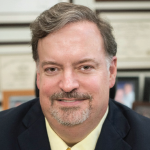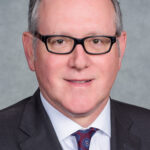
Sergey Nivens/shutterstock.com
An interdisciplinary and collaborative environment is a critical factor for the advancement of basic science and clinical research in the academic environment, says William J. Koopman, MD, former director of the University of Alabama at Birmingham’s (UAB’s) Division of Clinical Immunology and Rheumatology. And in 1977, when he was being recruited by Division Director J. Claude Bennett, MD, the presence of these features figured prominently in Dr. Koopman’s decision to relocate from the National Institutes of Health to Birmingham.
Committed to continuing his own research, Dr. Koopman was impressed by the cross-disciplinary opportunities offered at Birmingham—exemplified, he says, by the fact that Dr. Bennett held dual appointments in both the Department of Medicine, as director of the Division of Rheumatology and Clinical Immunology, and in the Department of Microbiology, as chairman.
“I did not want to be in a cloistered environment,” Dr. Koopman recalls. “I was looking for an institution that really promoted interdisciplinary and collaborative research. I thought UAB had that in spades.”
And there was another quality to the division that attracted him: “UAB was a young institution at the time I was being recruited, and I saw a real spirit there of growth, a ‘can-do’ attitude that we can be the best.” Dr. Koopman, now professor emeritus and an ACR Presidential Gold Medal winner, served as division director from 1983–1995. Then, as had his predecessor Dr. Bennett, he became chair of the Department of Medicine. (Both also served as presidents of the ACR and editors-in-chief of Arthritis & Rheumatism, now known as Arthritis & Rheumatology.)
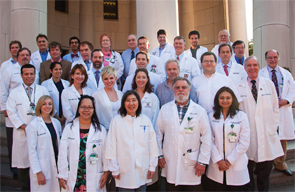
Faculty and fellows in the Division of Clinical Immunology and Rheumatology and the Division of Pediatric Rheumatology at the University of Alabama at Birmingham.
Other prominent faculty with whom we spoke echoed the attractions Dr. Koopman enumerates, strengths that he augmented during his time as division director. For example, he encouraged the translational clinical investigational program and founded the Arthritis and Musculoskeletal Diseases Center in 1985. UAB developed one of the first units to test new biologics, such as TNF inhibitors, in phase I and II trials in RA. These targeted therapies offered not only improved outcomes for patients, but an opportunity for researchers to increase knowledge of disease processes.
“With our strong marriage with the fundamental discipline of immunology, we were in a strategically placed position to take advantage of new breakthroughs in understanding the immune response and then applying these to human disease,” Dr. Koopman observes.
“I think the fact that there aren’t silos here at UAB has been a tremendous asset,” agrees Jeffrey R. Curtis, MD, MS, MPH, the William J. Koopman Endowed Professor in Rheumatology and Immunology, who actively collaborates with many people in the School of Public Health and other Department of Medicine divisions. Dr. Curtis also directs the UAB Arthritis Clinical Intervention Program formed by Dr. Koopman. “It is UAB’s great strength to be able to work in a collaborative environment across disciplines,” he says. “Individual people, such as Dr. Koopman, have fostered that.”
The 36 faculty members, six pediatric rheumatology faculty and six emeritus faculty members represent an impressive depth of knowledge. With five endowed chairs and two endowed professorships, vigorous multicenter research programs supported by more than $14 million in total research funding in the current fiscal year and a vibrant fellowship program, the UAB Division of Clinical Immunology and Rheumatology has, through strong leadership and nurturance of talent, attained national prominence.
A Heritage of Strong Leadership
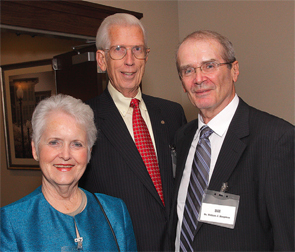
Dr. Bill Koopman (right) with Mr. Elmer Harris, former CEO of Alabama Power, and his wife, Glenda, at an event honoring Dr. Koopman.
In 1945, the Medical College of Alabama moved from Tuscaloosa to Birmingham, and the university’s medical center was founded. In the 1950s, as part of a rapid period of growth initiated by the renowned cardiologist and internist Tinsley R. Harrison, MD, Howard L. Holley, MD, was tapped to establish a Division of Rheumatology within the Department of Medicine. Early on, Dr. Holley encouraged formation of a clinical training program, which included PhD faculty members focusing on the physicochemical properties of the rheumatoid factor. He recognized the importance of disentangling the etiology of this disease, which affected him personally (he had RA).
Laboratory-based research surged when Markle Scholar J. Claude Bennett, MD, who had joined the faculty in 1966, became director of the newly named Division of Clinical Immunology and Rheumatology. The succession of leaders after Dr. Bennett—
Drs. Koopman, Ball, Kimberly and Carter—solidified UAB’s standing as a premier site for not only clinical outcomes research, but also investigation of the pathogenesis of the rheumatic diseases, especially SLE.
The history of the division, says Division Director S. Louis Bridges Jr., MD, PhD, professor of medicine and the Anna Lois Walters Endowed Chair, reveals the advances made by each of the division’s leaders. Interviews with our sources underline the consistent thread of collegiality for which the division is also renowned.
Mentoring Talent
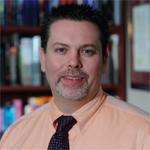
Jeffrey R. Curtis, MD, MS, MPH, the William J. Koopman Endowed Professor in Rheumatology and Immunology
The strong leaders of the division, many of whom trained at Harvard Medical School, says Dr. Bridges, have created “the longstanding reputation we have for clinical and research excellence, one of the unique aspects of our division.”
And that excellence, in turn, has attracted strong mentors to the division. Kenneth G. Saag, MD, MSc, was attracted to UAB 19 years ago, based on the established record of collaborative and interdisciplinary research, as well as on the opportunity he saw “to grow a program in epidemiology and outcomes research.” This was accomplished first with university resources and then federal funding. “We’re very passionate about the support from both NIH and AHRQ training grants that give us the infrastructure to train the next generation of investigators,” Dr. Saag says.
Of his 2013 Excellence in Investigative Mentoring Award, Dr. Saag remarks, “While that honor was well appreciated, I think that it was a testament to the environment here at UAB and our philosophy that we have to create the right environment and give junior people protected time so that they can launch their careers and be successful.”
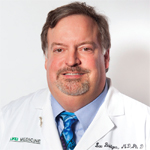
Division Director S. Louis Bridges Jr., MD, PhD
Dr. Curtis, who trained with Dr. Saag, has attained national success while part of the division, notably receiving the 2012 Henry Kunkel Young Investigator Award from the ACR. Dr. Curtis notes that supportive leadership has been key.
Dr. Curtis emphasizes: “Among the three most important components that contribute to success for a junior investigator are: ‘It’s your mentor, your mentor and your mentor.’”
He credits Dr. Saag’s mentorship with helping him advance his own research and Dr. Bridges with the ability to bring in and nurture new talent. “Dr. Bridges,” he says, “is well respected as a researcher, but he also brings a level of human empathy and altruism to help create an environment conducive to collaborative projects.”
Inclusiveness Emphasized
Given UAB’s myriad research centers, communication is key, says Dr. Bridges, for staying abreast of colleagues’ achievements. “We make strong efforts—through the Council of Center Directors meetings and other venues—to make sure we communicate, collaborate and synergize, so that we work together instead of reinventing the wheel.”
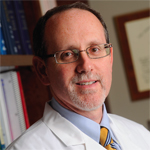
Kenneth G. Saag, MD, MSc
A yearly research day and a weekly journal club affiliated with the Comprehensive Arthritis, Musculoskeletal, Bone and Autoimmunity Center (CAMBAC), executive committee meetings for the NIH-funded Center for Clinical and Translational Sciences (headed by past Director Dr. Kimberly), symposia and seminars round out the abundant meeting calendar.
In the midst of all this interconnected activity, fellows are always encouraged to participate and present about their own scholarly activities. Matthew B. Mullen, MD, currently a second-year fellow, can attest to the inclusiveness of senior faculty. In fact, that was one of the deciding factors for his choice to train at UAB. He had interviewed at seven other programs. “What really cemented [my decision] was that all the faculty members, who are nationally respected experts in the top of their field, were extremely approachable.”
All new fellows are invited to the Lowe Conference, an annual fall retreat started by Dr. Holley and now in its 61st year, held at a lodge in Nauvoo, Ala. There, trainees meet former fellows and become acquainted with the division’s history. At such events, Dr. Mullen notes, “You realize that you are part of something bigger.”
Among his other projects, Dr. Mullen is currently collaborating with Dr. Chatham and Dr. Martin Trojanowski on assembling a retrospective cohort of cases of macrophage activation syndrome in adult inpatients to compare survival rates, laboratory parameters and treatments.
International Reach
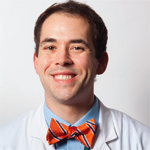
Matthew B. Mullen, MD
Dr. Saag is director of the Center for Education & Research on Therapeutics of Musculoskeletal Disorders (CERTS) and the Center for Outcomes Effectiveness Research and Education (COERE). The latter is funded by AHRQ. Dr. Saag notes that these endeavors have blossomed through collaborations with other UAB divisions, such as the School of Public Health, and outside groups in managed care and the private sector.
Dr. Saag also co-directs, with Dr. Bridges, the UAB Center of Research Translation (CORT), which is focusing on gout in the predisposing state of hyperuricemia, a disease state that has particular relevance to the African American population in the Southeast. With funding from NIAMS, three projects at the Center are focused on the theme, Gout and Hyperuricemia: From Bench to Bedside to Backyard. “We are situated in an area of the country with a minority population,” says Dr. Bridges. “Minority health disparities and health research are very important to us.”
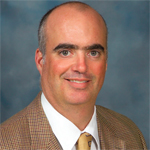
Ted R. Mikuls, MD, MSPH
The division also holds a NIAMS-funded Multidisciplinary Clinical Research Center grant (led by Drs. Bridges and Saag) and a NIAMS-funded Rheumatic Diseases Core Center (led by Dr. John Mountz).
Graciela S. Alarcón, MD, MPH, emeritus professor of medicine, UAB School of Medicine, arrived in 1980, accompanying her husband who had joined the UAB Department of Psychiatry. She had trained and served as a rheumatology faculty member at the Universidad Peruana Cayetano Heredia in her native Peru and had already completed a clinical fellowship at Johns Hopkins. Dr. Bennett, then division director, invited her to stay as a research fellow.
“From the beginning, I was made to feel part of the team,” she says of her early years there. In 1981, she joined the faculty and began clinical investigation. She recalls Dr. Koopman’s encouragement for her lupus research, which began her “second career” at UAB. During her time at UAB, she also served as Arthritis Care & Research editor in chief, gained national prominence for the lupus research program, and was the 2011 recipient of the Evelyn V. Hess Award. Private foundation funding made it possible to bring Latin American rheumatologists to UAB for training. Now living in the San Francisco Bay Area, she maintains contact with UAB fellows, giving input to their research projects. She was especially gratified with the way in which UAB nurtured its trainees. “We have retained some of our fellows as faculty [Drs. Bridges, Curtis, Chatham, Danila, for example]. We have retained the best and the brightest.”
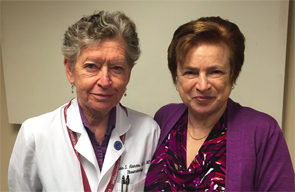
Graciela Alarcón, MD, MPH (left), with
Bevra Hahn, MD
When talented faculty move to other institutions, as has epidemiologist and rheumatologist Ted R. Mikuls, MD, MSPH, Umbach Professor of Rheumatology, University of Nebraska Medical Center, the division profits from continuing collaborations. When he was searching for a fellowship, Dr. Mikuls, now the Umbach Professor of Rheumatology at the University of Nebraska Medical Center in Omaha, had already interviewed with Dr. Saag before the latter relocated to UAB. “The timing was perfect,” Dr. Mikuls recalls. After Dr. Saag joined the division, “I interviewed there at UAB. I had never seen myself going to the South, but they had a diverse, powerhouse group and were all very approachable. It was a great place and I’m glad I went there.”
In addition to his duties with the Division of Rheumatology, Dr. Mikuls is principal investigator for the VA Rheumatoid Arthritis Registry; and continues to be engaged with UAB’s clinical researchers. “Of all the institutions around the country that I collaborate with—and I collaborate with many—my strongest collaborations, not surprisingly, reach back to UAB. In some ways I feel like I’m an honorary division member!”
Gretchen Henkel is a medical journalist based in California.
